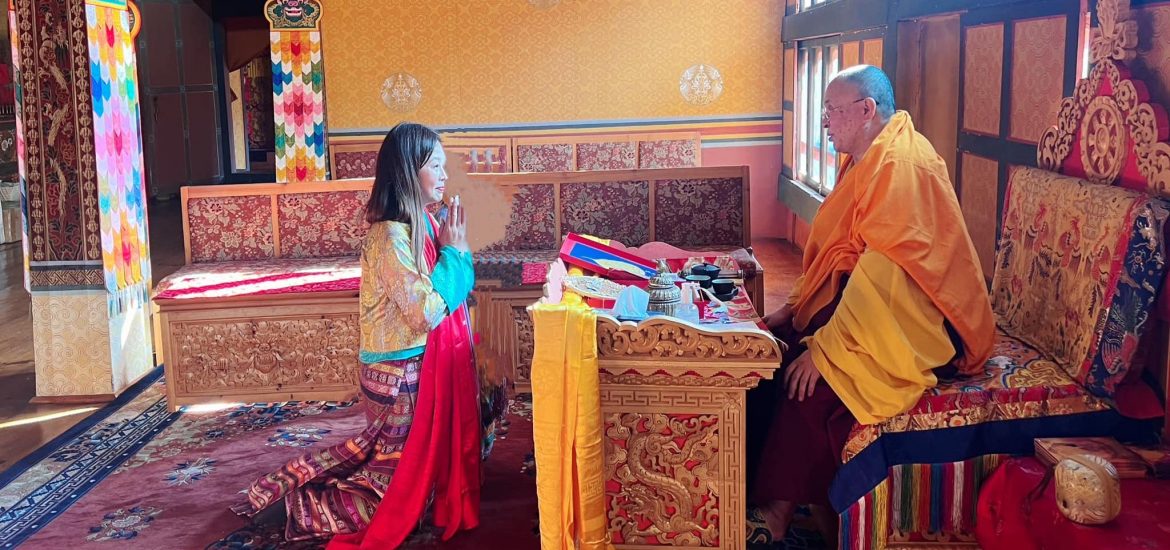Since September, I have been on what might be called an extended pilgrimage: first to India, and then to Nepal, before my final Himalayan stop – the last independent Buddhist kingdom of Bhutan. I flew there just last week, directly from Kathmandu. In this country’s system of constitutional monarchy, the Je Khenpo is tasked to be the spiritual head of the nation.
I was able to connect with both the current Je Khenpo, tulku Jigme Chhoeda, and his successor (who takes the reins next year) through my highly revered master teacher, His Eminence Leytsog Lopon Sangay Dorji. As the Leytsog Lopon, Sangay is the most senior among the “five diamonds” of the Zhung Dratshang (the central monastic governing body of the country). He has been a guiding light to me even before I came to Bhutan.
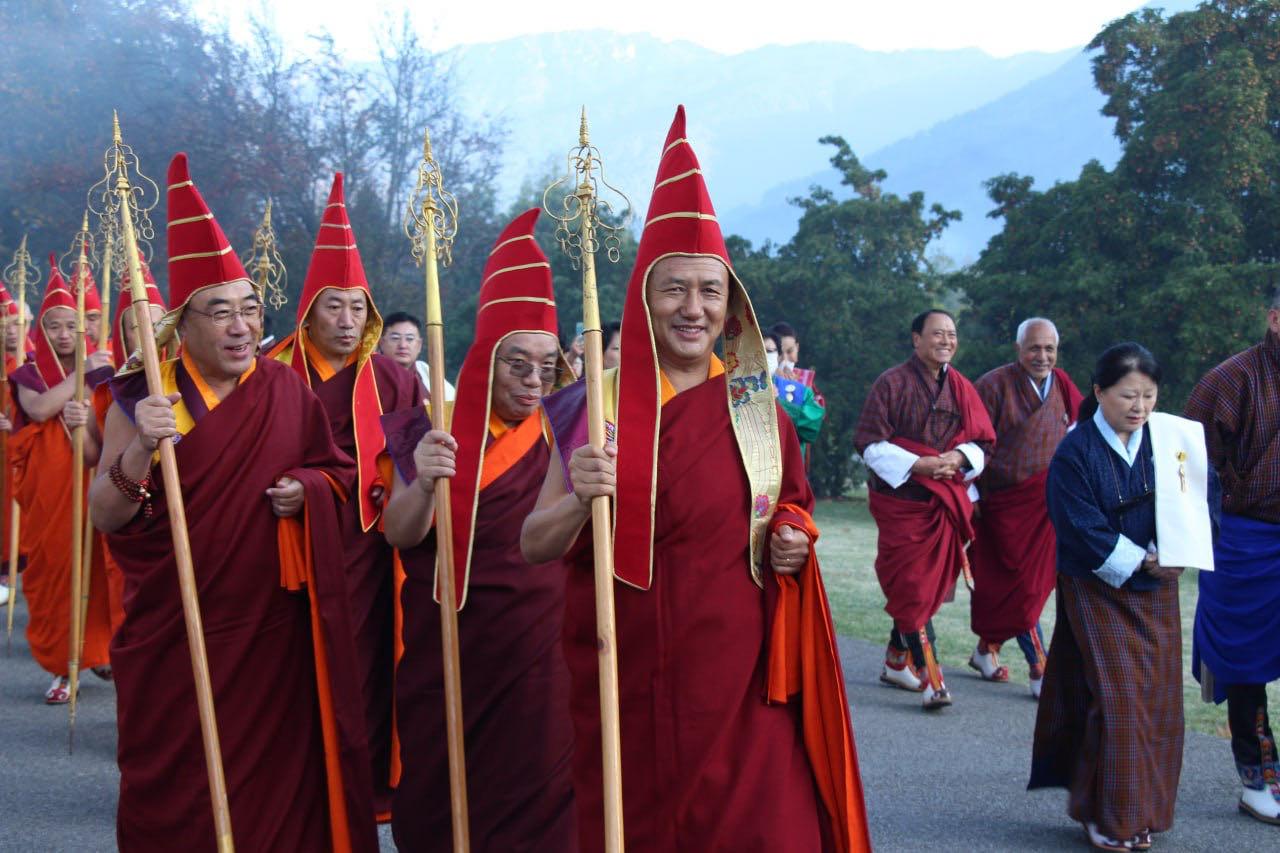
On November 11th, I met the Je Khenpo in a private audience at Tashichho Dzong, the seat of Druk Desi, the head of Bhutan’s civil government since 1907, and summer capital of the country. During our meeting, in which I took refuge in the three treasures under him, I offered him my self-painted gold bodhi leaf Green Tara painting and a Sri Lankan-style, Theravada fan that I have been inspired by since my trip to Dubai in August. I was in awe of his presence, basking in his golden light. He offered me the practice of Chenrezig, “The lamp which lights the way for doing the meditation and recitation of Chenrezig,” to start my meditation practice. Since then, I feel that I have been filled with deep and ineffable joy. I feel privileged and blessed to have had this unique experience.
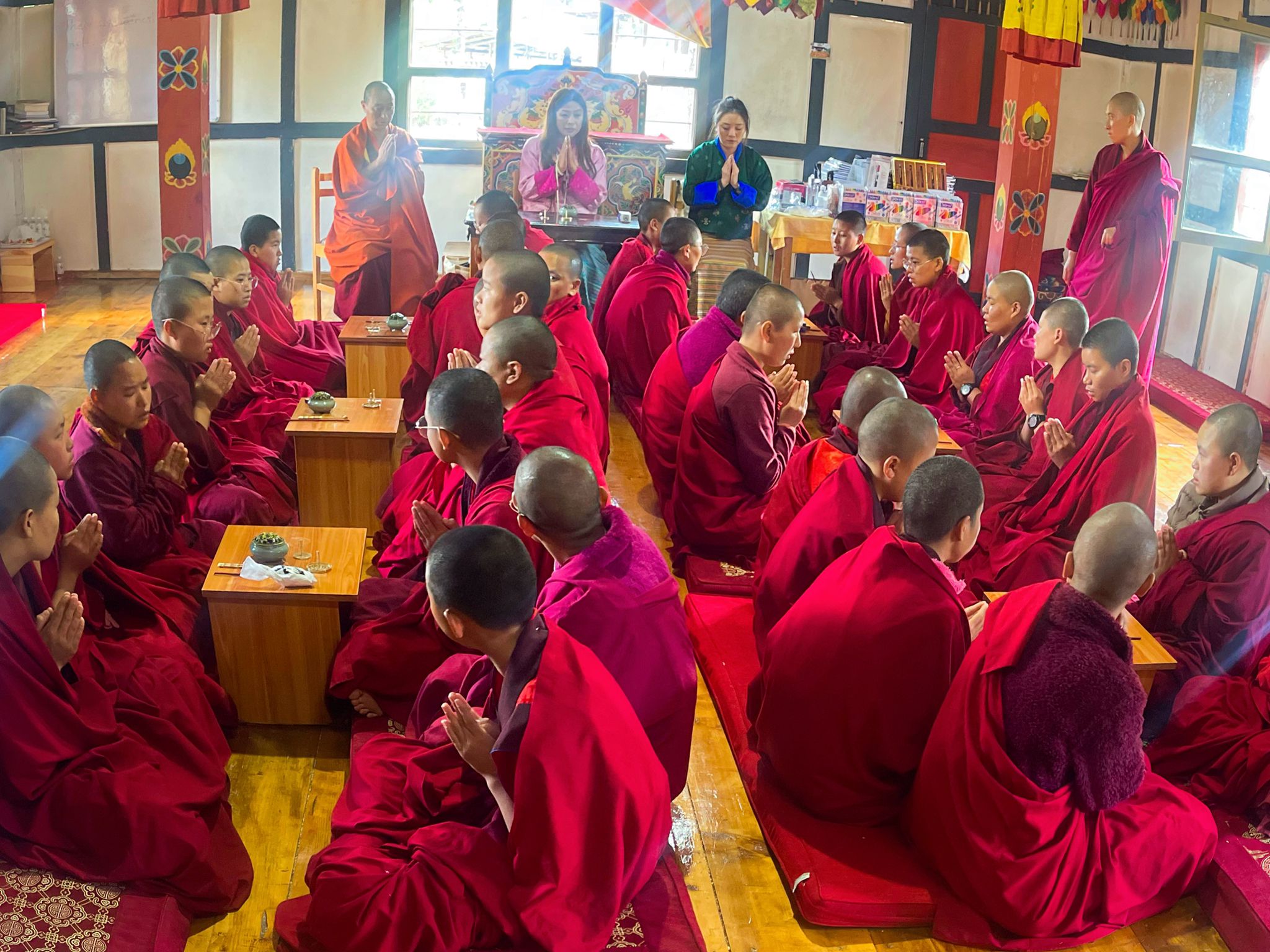
The final day of my Bhutan pilgrimage was extremely special as well. I had the privilege of conducting an incense workshop for 60 nuns at a Dakini nunnery in Paro. Tenchen Choling Nun’s Buddhist College is located in one of the twenty districts governed by Sangay. What makes this nunnery special is that one of Guru Rinpoche’s (Padmasambhava) five consorts resides here in spirit form.
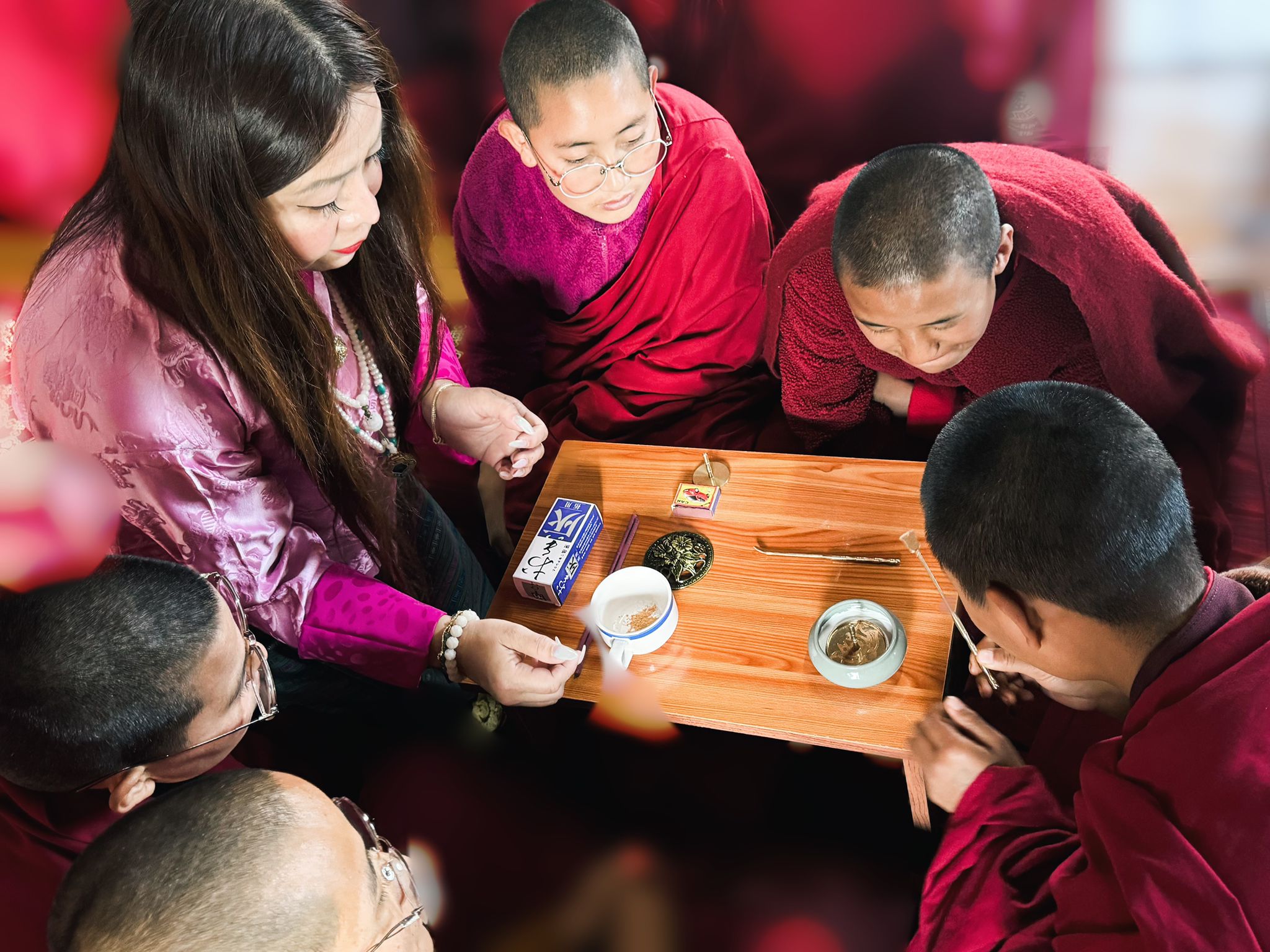
During the workshop, I shared the history of incense, from ancient India to Tang China to Heian Japan. I also quoted sutras referring to Chenrezig’s incense practice and which rules and regulations we need to observe as practitioners of the art of incense. I told the nuns that the mythic origin of incense comes from Akshobhya’s Pure Land of Abhirati, where the two bodhisattvas of incense reside and the entire Buddha-field is fragrant with incense.
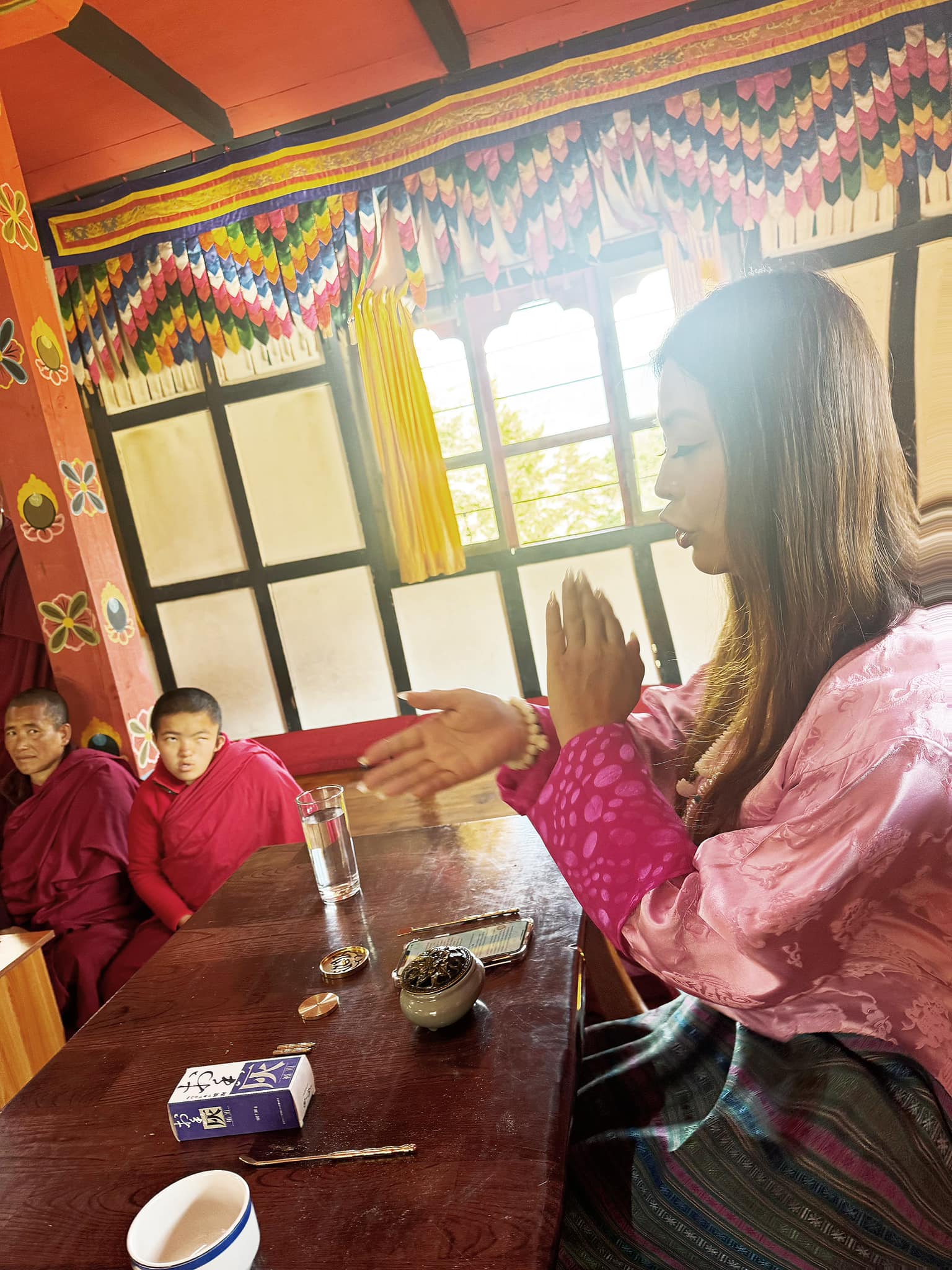
A master once described the benefits of incense as creating peace in all the six roots (the eye root, the ear root, the nose root, the tongue root, the body root, and the meaning root).
To make the workshop more engaging, I brought incense seal-making sets from Hong Kong for a practical hands-on session. With these kits, I shared with them my passion to promote Buddhist mindfulness practice through incense. “Great compassion releases suffering”: this is one of the 84,000 methods that open the door to Dharma and enlightenment.
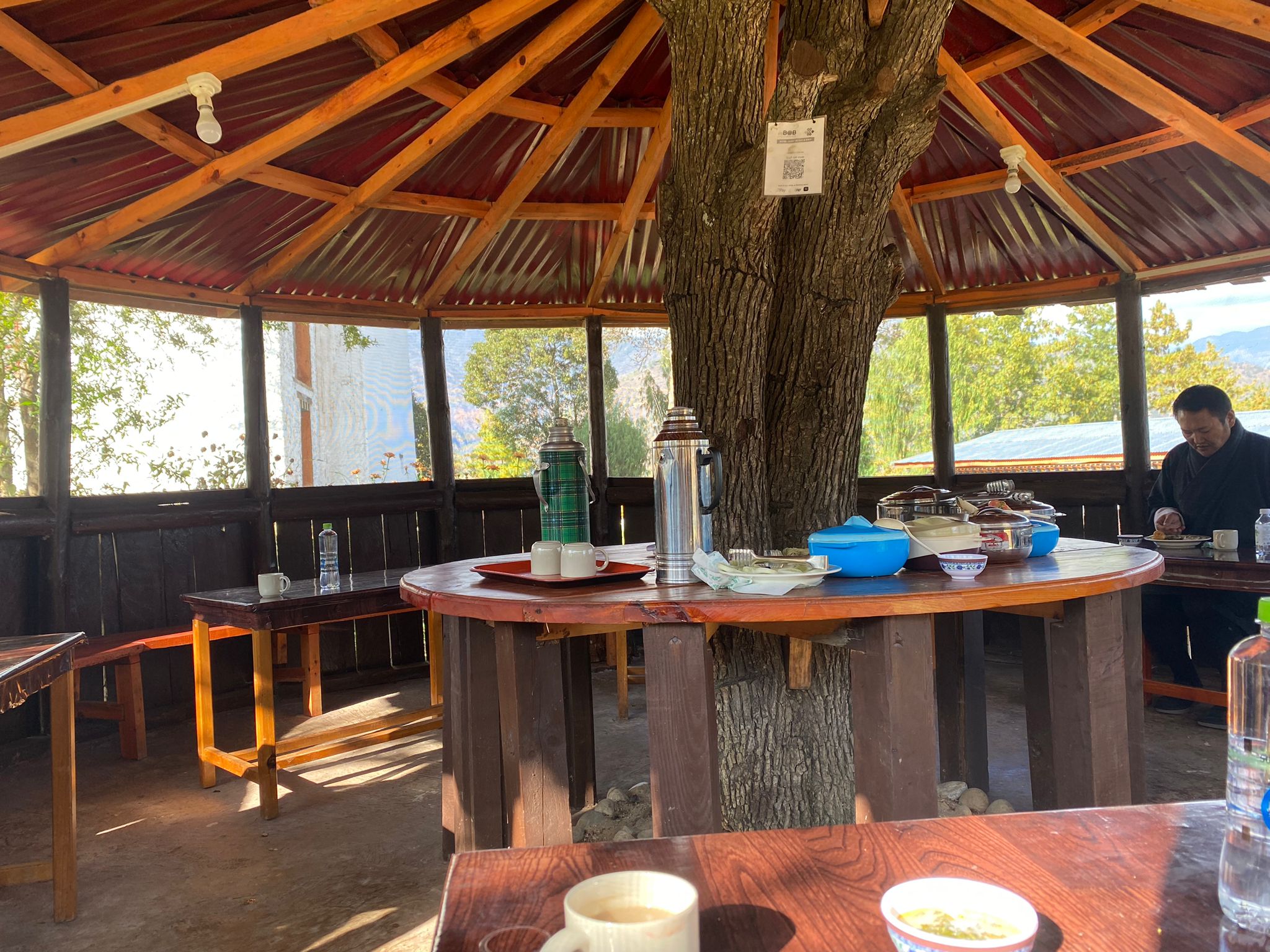
Afterward, all the nuns joined in a mantra recital before their abbot, who is extremely respectful of Sangay, offered me lunch in a room with a tree inside! The nunnery is truly a sanctum for meditation, where the use of mobile phones is forbidden for five days a week. The nunnery implements the strictest discipline for advanced Buddhist female monastic practitioners to further their study and practice.
I was so honored to make friends with these extraordinary women, and in the future hope for a chance to return to Bhutan to teach more incense classes with Sangay’s blessing.
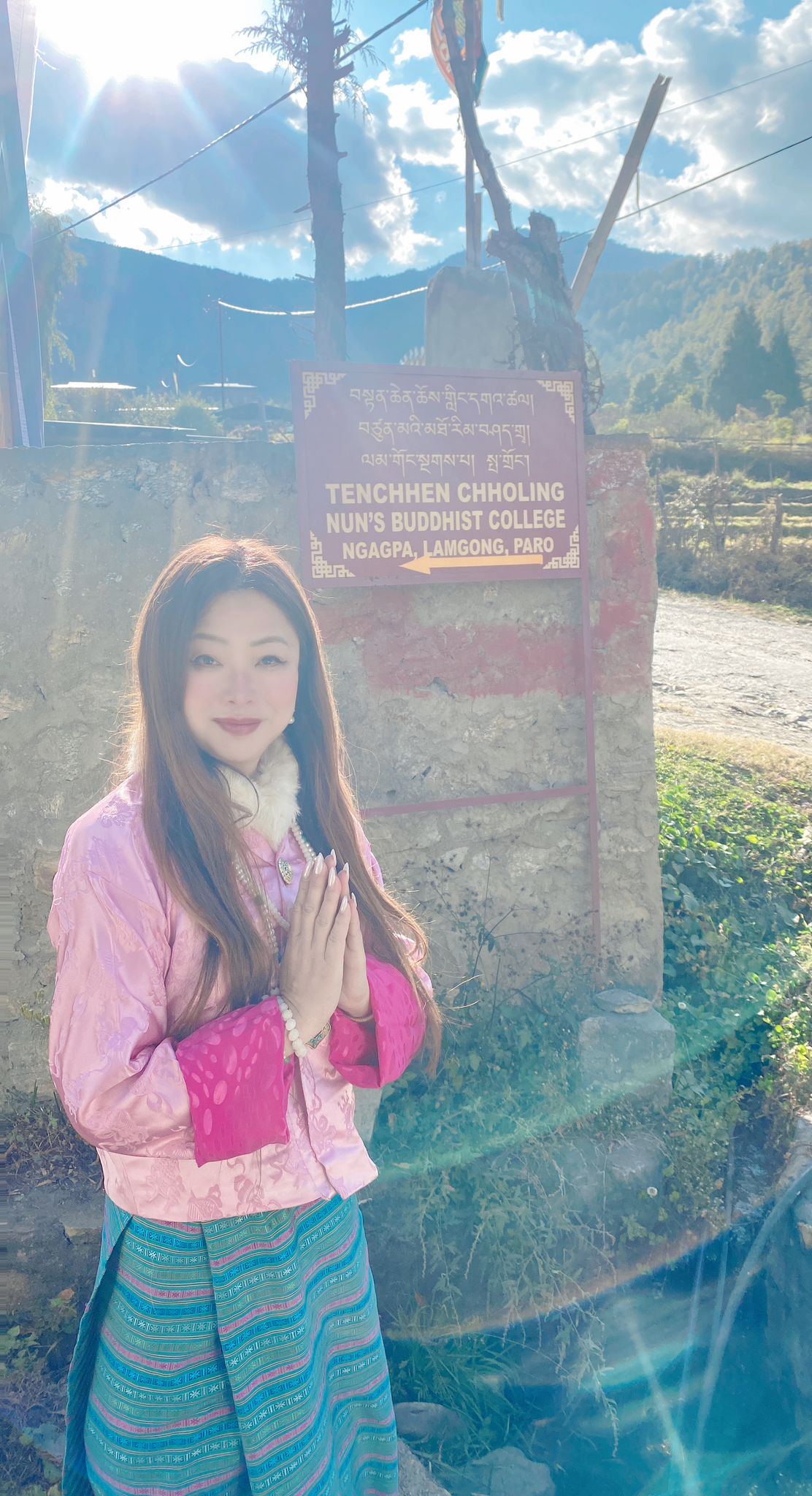
In my upcoming articles on BDG, I will be interviewing Dr. Sarika Singh, one of the world’s few qualified female thangka specialists, and Sangay Dorji himself. I hope you look forward to enjoying them as much as I am enjoying writing them.


